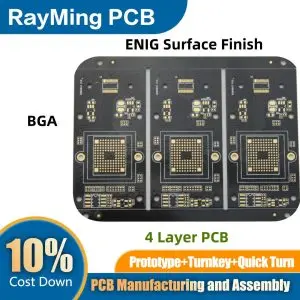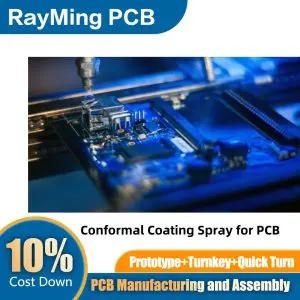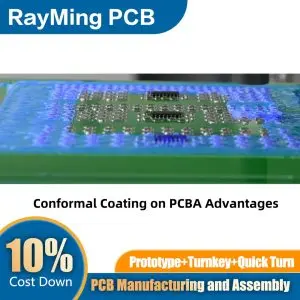In the world of electronics manufacturing, printed circuit boards (PCBs) are the backbone of countless devices. As these devices become more complex and are used in increasingly diverse environments, protecting PCB assemblies from external factors becomes crucial. One of the most effective methods of protection is conformal coating. This article explores the concept of conformal coating, its benefits, applications, and helps you determine whether your PCB assembly needs this protective measure.
What is Conformal Coating?
Definition and Purpose
Conformal coating is a thin protective chemical coating applied to PCB assemblies to protect the electronic components from environmental stresses. The coating “conforms” to the contours of the PCB, providing a uniform protective layer.

Types of Conformal Coatings
There are several types of conformal coatings, each with its own characteristics and applications:
| Coating Type | Key Features | Best For |
| Acrylic (AR) | Easy to apply and remove, good moisture resistance | General purpose, prototyping |
| Urethane (UR) | Excellent chemical and abrasion resistance | Harsh chemical environments |
| Silicone (SR) | High temperature resistance, very flexible | Extreme temperatures, high humidity |
| Epoxy (ER) | Strong chemical and abrasion resistance | Demanding environments, long-term protection |
| Parylene | Thin, uniform coating, excellent barrier properties | Medical devices, aerospace applications |
Application Methods
Conformal coatings can be applied using various techniques:
- Dipping
- Spraying
- Brushing
- Selective coating
- Vapor deposition (for Parylene)
Each method has its advantages and is chosen based on the PCB design, production volume, and required precision.
Benefits of Conformal Coating
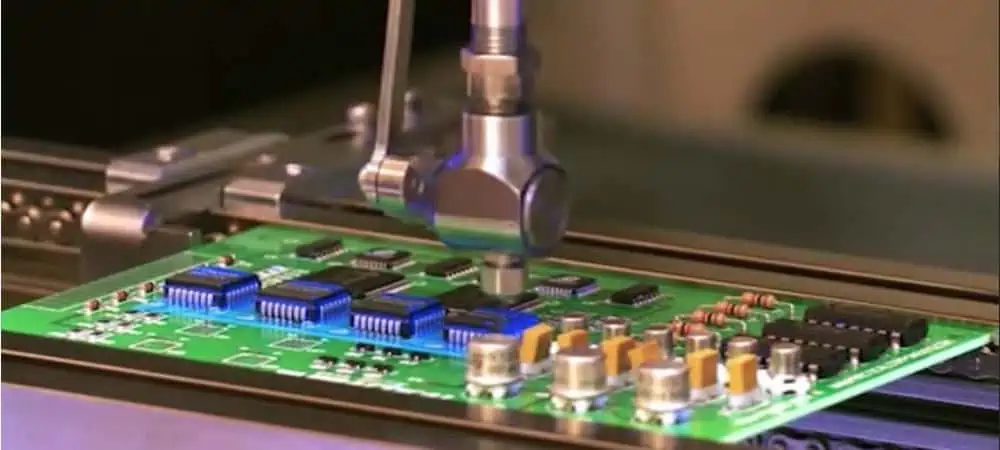
Environmental Protection
Moisture Resistance
Conformal coatings create a barrier against moisture, preventing corrosion and electrical shorts.
Temperature Resistance
Certain coatings can protect PCBs from extreme temperatures, both hot and cold.
Chemical Protection
Coatings shield components from exposure to harmful chemicals and solvents.
Mechanical Protection
Vibration and Shock Resistance
Coatings can absorb some of the stress from vibrations and shocks, protecting delicate components.
Abrasion Protection
The coating layer guards against physical wear and tear.
Electrical Benefits
Improved Dielectric Strength
Coatings increase the insulation between components, reducing the risk of arcing and short circuits.
Prevention of Dendrite Growth
Coatings inhibit the growth of conductive dendrites that can cause short circuits over time.
Extended Lifespan
By protecting against various environmental and physical stresses, conformal coatings can significantly extend the life of PCB assemblies.
When to Consider Conformal Coating
Environmental Factors
Consider conformal coating if your PCB will be exposed to:
- High humidity or moisture
- Salt spray or corrosive atmospheres
- Extreme temperatures
- Chemicals or solvents
Application-Specific Requirements
Certain industries and applications often require conformal coating:
| Industry | Common Requirements |
| Automotive | Temperature extremes, vibration, chemicals |
| Aerospace | Altitude changes, temperature fluctuations |
| Marine | High humidity, salt spray |
| Industrial | Chemicals, dust, vibration |
| Medical | Biocompatibility, sterilization resistance |
Regulatory Compliance
Some industries have regulations that mandate the use of conformal coatings for safety and reliability.
Factors to Consider Before Applying Conformal Coating
PCB Design Considerations
Component Selection
Some components may not be suitable for coating or may require masking.
Layout and Spacing
Adequate spacing between components is necessary for proper coating coverage.
Test Points and Connectors
Areas that require electrical contact may need to be masked before coating.
Cost Analysis
While conformal coating adds to the production cost, it should be weighed against:
- Potential warranty claims
- Product failures in the field
- Brand reputation damage
Production Process Impact
Implementing conformal coating may require:
- Additional equipment
- Extended production time
- Quality control measures
Repairability
Coated PCBs can be more challenging to repair, which should be considered for products that may require field servicing.
The Conformal Coating Process
Pre-Coating Preparation
- Cleaning the PCB assembly
- Masking areas that should not be coated
- Pre-heating (if required)
Coating Application
The chosen application method is used to apply the coating evenly across the PCB.
Curing
Depending on the coating type, curing may involve:
- Heat curing
- UV curing
- Moisture curing
- Room temperature curing
Quality Control
Post-coating inspection may include:
- Visual inspection
- Thickness measurement
- Continuity testing
Challenges and Considerations

Common Issues
| Issue | Cause | Solution |
| Bubbles | Trapped air, improper application | Adjust application technique, use vacuum to remove air |
| Delamination | Poor surface preparation, incompatible materials | Improve cleaning process, choose compatible coating |
| Incomplete coverage | Improper application technique | Adjust application method, multiple coats if necessary |
| Orange peel effect | Improper spraying technique | Adjust spray parameters, consider dif |
Material Compatibility
Ensure the chosen coating is compatible with:
- PCB substrate material
- Component materials
- Solder mask
- Labels and markings
Thickness Control
Maintaining the right coating thickness is crucial for:
- Adequate protection
- Avoiding excess weight
- Preventing thermal insulation issues
Masking and Keep-Out Areas
Proper masking is essential for:
- Connectors
- Test points
- Adjustable components
- Heat sinks
Alternatives to Conformal Coating
Potting and Encapsulation
For extreme environments, potting the entire PCB in a protective resin may be more suitable.
Sealed Enclosures
Using hermetically sealed enclosures can provide protection without coating the PCB directly.
Ruggedized PCB Design
Designing the PCB with built-in protection features can reduce the need for additional coating.
Future Trends in Conformal Coating
Nano-Coatings
Ultra-thin nano-coatings are being developed for better protection with minimal impact on PCB properties.
Smart Coatings
Self-healing and self-diagnosing coatings are emerging technologies that could revolutionize PCB protection.
Environmentally Friendly Options
New coating formulations are focusing on reducing environmental impact and improving sustainability.
Conclusion
Conformal coating can significantly enhance the reliability and longevity of PCB assemblies, especially in challenging environments. While it adds complexity and cost to the manufacturing process, the benefits often outweigh these factors for many applications. By carefully considering the specific needs of your PCB assembly and the environment it will operate in, you can make an informed decision about whether conformal coating is necessary for your project.
As technology continues to advance, we can expect to see new coating materials and application methods that offer even better protection with fewer drawbacks. Staying informed about these developments will help ensure that your PCB assemblies remain protected and reliable in an ever-evolving technological landscape.
Frequently Asked Questions (FAQ)
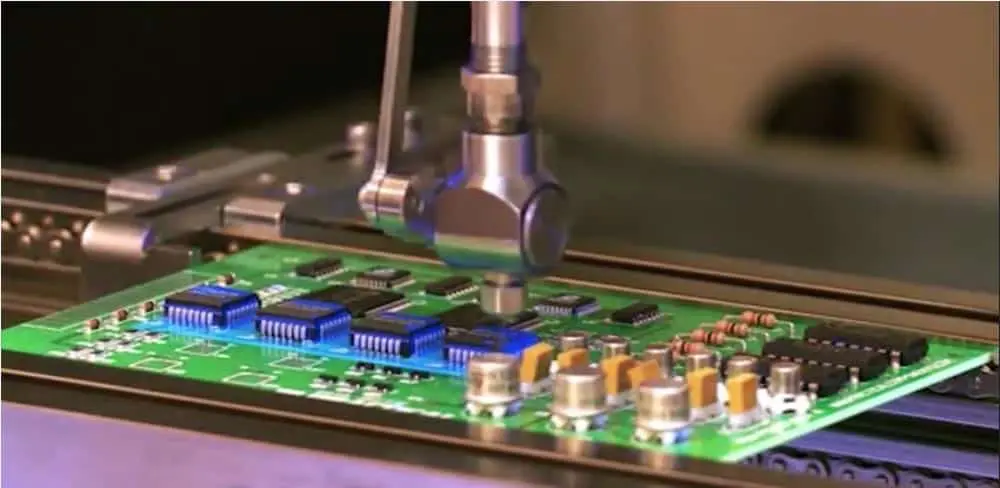
1. How long does conformal coating typically last?
The lifespan of conformal coating depends on the type of coating used and the environmental conditions. Generally, a well-applied conformal coating can last anywhere from 5 to 10 years or even longer in controlled environments. However, in harsh conditions or with constant exposure to extreme temperatures or chemicals, the coating may degrade more quickly.
2. Can conformal coating be removed if repairs are needed?
Yes, conformal coating can be removed for repairs, but the process can be challenging and time-consuming. The removal method depends on the type of coating used. Some coatings can be removed with solvents, while others may require mechanical abrasion or specialized removal techniques. It’s important to note that the removal process can potentially damage components if not done carefully.
3. Are there any components that should not be coated?
Yes, certain components should not be coated or require special consideration:
- Connectors and sockets
- Switches and relays
- Potentiometers and trimmers
- Some types of sensors
- Components that generate significant heat
These components may need to be masked before coating or may require selective coating techniques.
4. How thick should the conformal coating be?
The ideal thickness of conformal coating typically ranges from 25 to 250 micrometers (1 to 10 mils), depending on the specific coating type and application requirements. Thinner coatings may not provide adequate protection, while excessively thick coatings can lead to issues with heat dissipation and component stress.
5. Can conformal coating affect the electrical properties of the PCB?
While conformal coating is designed to have minimal impact on electrical properties, it can affect them in some ways. The coating may slightly change the capacitance between closely spaced conductors and can impact the performance of high-frequency circuits. Additionally, some coatings may affect the dielectric constant of the PCB. These factors should be considered during the design phase, especially for sensitive or high-frequency applications.


